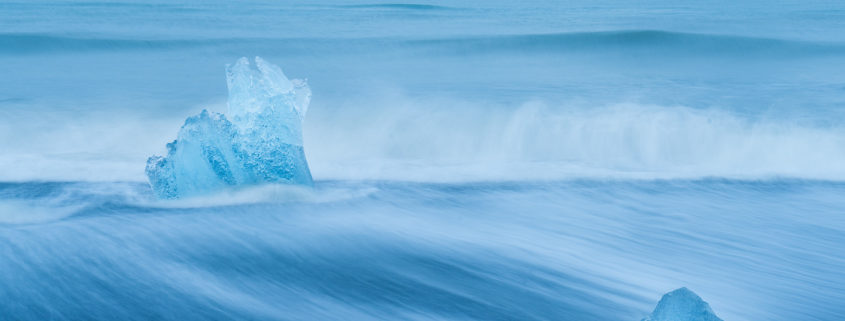Why Do Some Landscape Photos Work and Others Do Not?
Take a look at the following photos taken by Varina Patel while shooting one of the case studies of our Creating Impact Vol-1 video course in Iceland. After some failed attempts (photos #2 and #3), she finally manged to get the photo she wanted (photo #1). In the successful photo, leading lines seem to perfectly line up and direct the viewers eyes from one iceberg to another. This image grabs viewers’ attention in a way that the other two images cannot.
The question here is,
Why do some photos work and others do not?
To answer this question, you must understand how your brain interprets an image. The brain is very good at categorizing and organizing. In order to do this, your brain divides up an image into smaller sections that are similar to each other. When these sections compete equally for attention, it’s hard for the brain to differentiate between the subject and the background.
Priniciples of Perception – Illustrations
This is what is happening in Illustration #1 below. Sometimes you see the cup and sometimes you see two faces staring at one another. When this happens in your landscape photos, it’s difficult to keep the viewer’s attention on the subject or even to recognize the subject. As a result, the photo does not produce your desired impact.
Compare this with Illustration #2 below which shows a small blue square surrounded by a larger green area. In this illustration, your brain classifies the small blue square as a subject and the larger green area as the background. A landscape photo based on this philosophy makes its subject stand out… and helps the viewers see exactly what you intended because the brain easily separates the subject from its background.
Applying these concept to Varina’s Photos
When you look at Varina’s successful Photo #1, the entire scene seems simplified because the subject (icebergs) is surrounded by a near-uniform background of parallel water streaks. This arrangement simplifies the scene and separates the subject from the background. Additionally, the two icebergs appear linked-together by streaks of water. In the Photo #2 (failed attempt), there is no such uniform background between the icebergs. In the Photo #3 (another failed attempt), the first iceberg all but disappears in the messy background.
So… when you are out trying to capture stunning landscape photos, try to organize your photos to ensure the brain is able to separate your subject from your background. This can help create photos with real impact.
Creating Impact Vol-2 Course
Our Creating Impact Vol-2 Course dives deep into techniques to make your subject stand out. You’ll learn how you can organize your composition to create images with greater impact and appeal by tapping into shared experiences and commonalities. You’ll learn to use the Principles of Perception to understand why some photos just work – and why others do not.
Furthermore, we have partnered with Anne Mckinnell to demonstrate how to process photos from our case studies using Adobe Lightroom. This partnership provides you with a start-to-finish look at how to create effective images.










